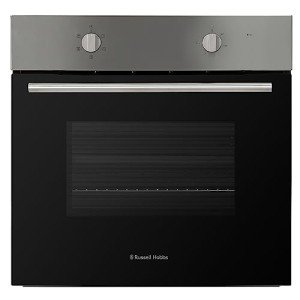The Future of Culinary Convenience: Integrated Ovens and Hobs
In the ever-evolving world of cooking area design, integrated ovens and hobs are at the leading edge of modern culinary innovation. These appliances not only assure aesthetic appeal however also boost performance and effectiveness, transforming how we prepare our meals. As property owners increasingly seek to produce seamless, elegant, and user-friendly cooking spaces, the integration of ovens and hobs offers a perfect service. This short article explores what integrated ovens and hobs are, their benefits, and key factors to consider for those wanting to upgrade their cooking area.
What Are Integrated Ovens and Hobs?
Integrated ovens and hobs are cooking area appliances perfectly built into the cabinetry or counters, rather than sticking out as separate entities. Integrated ovens are designed to blend into cooking area systems, offering a flush surface with surrounding kitchen cabinetry. Likewise, integrated hobs are installed straight into the countertop, producing a structured look. This minimalist design technique not only elevates the aesthetic appeal of the kitchen area however likewise optimizes readily available area.
Types of Integrated Ovens
Single Ovens: These standalone systems are developed for simpleness and ease of usage, featuring a single cooking chamber and several cooking modes such as baking, grilling, and roasting.
Double Ovens: Ideal for larger households or devoted cooks, double ovens offer 2 independent cooking compartments, enabling numerous meals to be prepared concurrently at different temperature levels.
Mix Ovens: Blending traditional baking and steam cooking, mix ovens offer adaptability for various cooking needs, keeping moisture while guaranteeing completely cooked meals.
Kinds Of Integrated Hobs
Gas Hobs: These hobs permit exact temperature level control and immediate heat, making them a preferred amongst expert chefs and cooking enthusiasts.
Induction Hobs: Known for their efficiency and safety, induction hobs use electromagnetic energy to heat pots and pans directly. They are fast to heat and cool off rapidly, decreasing the threat of burns.
Electric Hobs: Featuring smooth ceramic or glass surface areas, electric hobs are easy to tidy and supply an even heat circulation for a variety of cooking designs.
Advantages of Integrated Ovens and Hobs
1. Space Optimization
With the pattern of smaller sized living spaces and open-concept homes, integrated home appliances help optimize kitchen area space. By fitting seamlessly into cabinetry, kitchen areas can appear larger and more open, lessening clutter and boosting visual appeal.
2. Aesthetic Appeal
Integrated ovens and hobs provide a streamlined, modern appearance that fits well within various design styles. The capability to tailor cabinetry ensures that homeowners can achieve a cohesive look that matches their design, whether modern, standard, or something in between.
3. Improved Functionality
Integrated home appliances frequently feature innovative functions such as wise innovation, self-cleaning choices, and various cooking modes. These improvements not just streamline the cooking process however likewise enhance usability, making cooking a pleasurable experience.
4. Safety Features
Integrated hobs, specifically induction designs, are considered safer than standard cooking surface areas. They cool off quickly, decreasing the threat of burns, and often include features like kid locks and automated shut-off for extra security.
Key Considerations When Choosing Integrated Ovens and Hobs
1. Space and Layout
Before buying integrated devices, think about the area readily available in your kitchen. Step the cabinetry and countertops carefully to make sure an ideal fit, permitting appropriate ventilation and installation area.
2. Cooking Needs
Assess your cooking practices and preferences. If you regularly captivate or prepare big meals, a double oven may be the very best choice. Conversely, if you're an occasional chef, a single oven may suffice. Similarly, choosing in between inbuilt ovens , electric, or induction hobs will depend upon your cooking style and convenience level.
3. Energy Efficiency
With increasing energy expenses and growing environmental issues, choosing energy-efficient appliances can conserve cash in the long run. Try to find products with high energy scores and features like programmable timers and eco-modes.
4. Quality and Brand
Investing in premium appliances from credible brand names makes sure toughness and efficiency. Checking out customer reviews and looking for recommendations can assist narrow down the finest options tailored to your requirements.

Conclusion
Integrated ovens and hobs are more than simply cooking area home appliances; they represent a shift towards a more functional, stylish, and effective technique to cooking. As property owners prioritize smooth design, benefit, and advanced functions, these integrated options will undoubtedly shape the cooking areas of tomorrow. Whether remodeling a kitchen or designing a new one from scratch, incorporating ovens and hobs is an investment that assures to improve both culinary experiences and the overall visual of the home.
